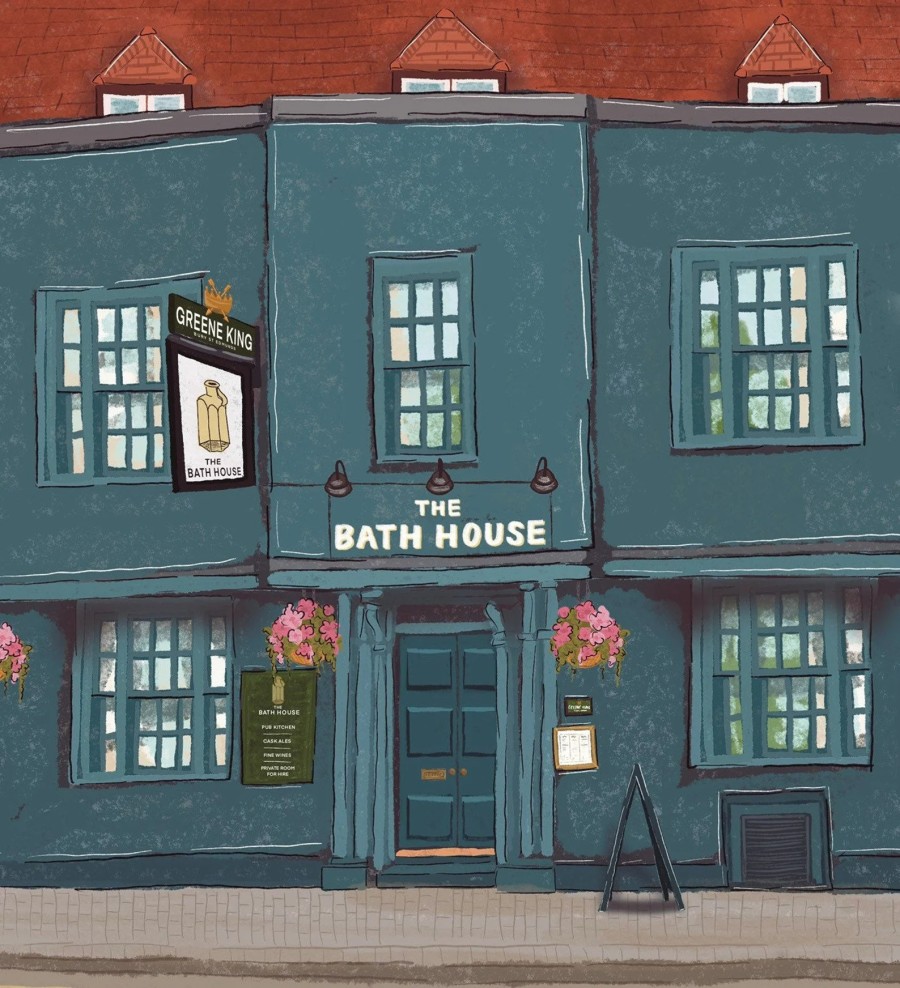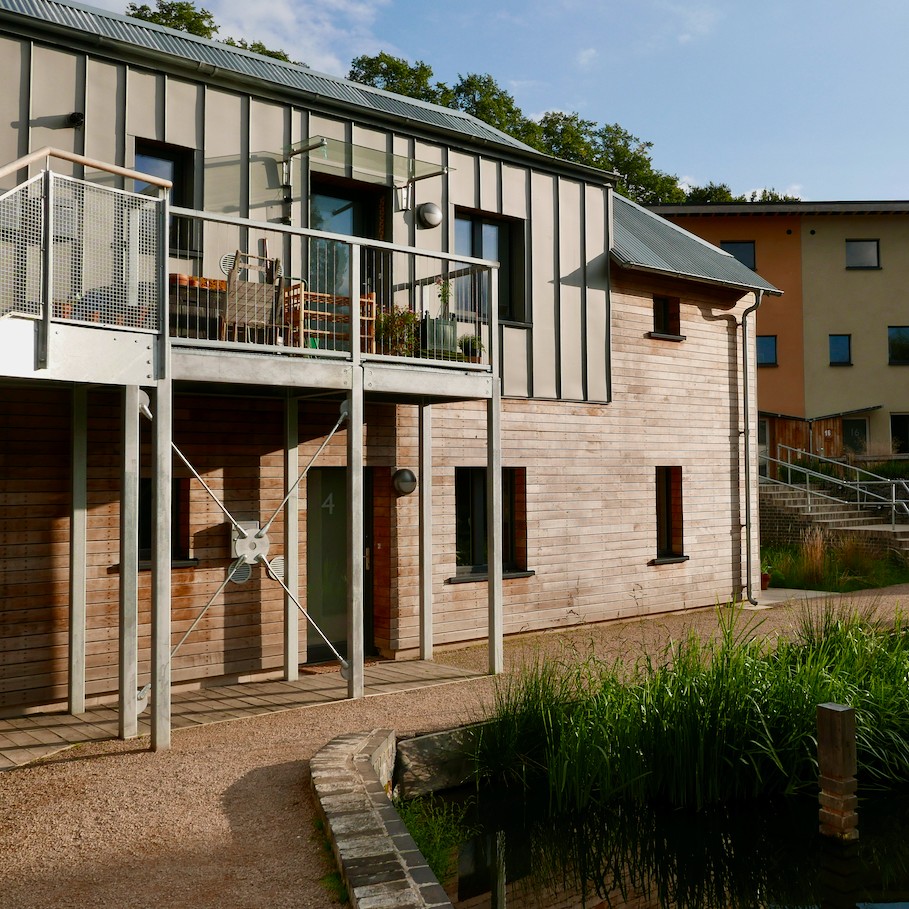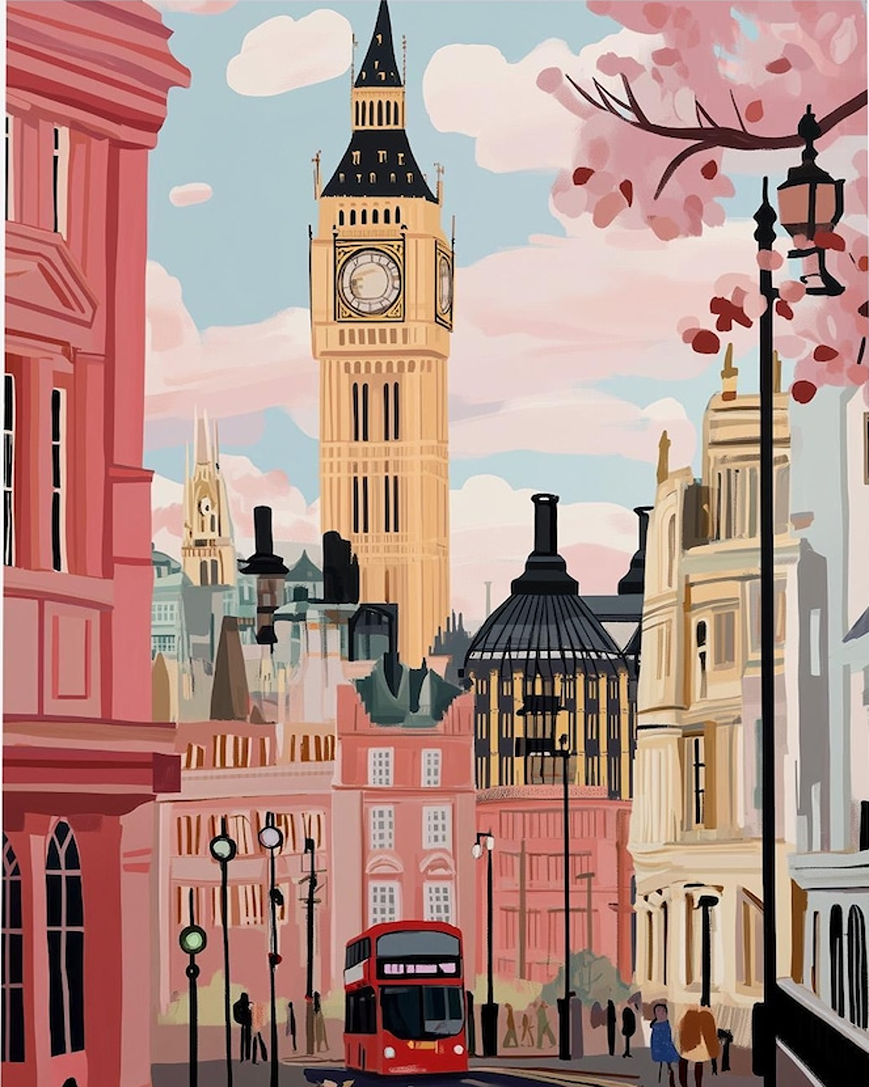Reasons Why England Needs More Trams
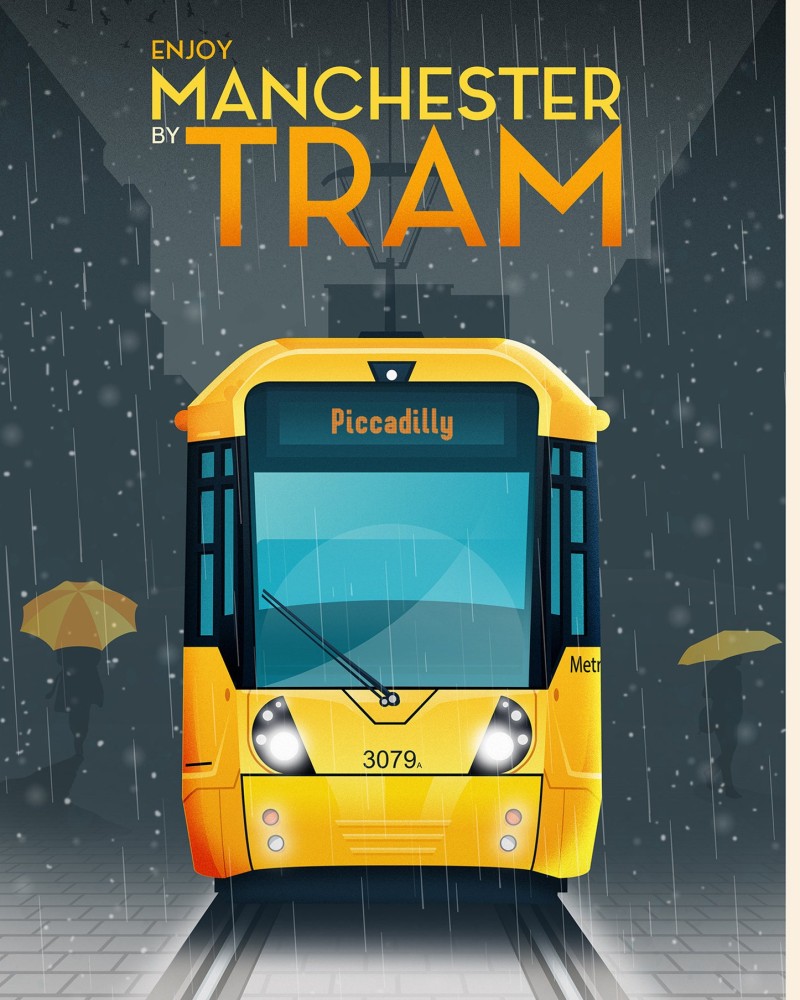
England only has a few tram stations nationwide. Trams are one of the best ways to get around without cars, yet England only has a few tram stations nationwide, unlike most European cities, where nearly everyone travels this way.
Unlike buses, trams can often ‘bend’ around corners and today over 60 trams criss-cross the city, ferrying both residents and tourists to where they want to go. Lisbon’s streets are naturally curvy, so this is an ideal mode of transport.
It’s hard not to notice how few trams England really has, especially when compared with France, Germany, or the Netherlands. Most English cities still rely on crowded roads, buses, or trains that often run behind schedule. This means more cars, longer traffic jams, and air that never quite seems fresh.
Why So Few Trams in England?
England (which also has many curved streets) has very few tram systems in its cities. London has a tram system to go along with its other modes of public transport.
Like trains, you need to stop before crossing tramlines as the vehicles often require a longer stopping distance than buses (as they go faster) and they are also quieter than cars, so don’t wear headphones nearby.
Nottingham has a 20-mile tram system through the city, as does Sheffield which operates 4 routes throughout the week across South Yorkshire. But the most famed tram route is undoubtedly in Blackpool, where is one of the oldest in the world, dating back to 1885.
Running for 11 miles, it carries millions of residents and holidaymakers each year, and is one of only a few that runs double-decker trams (the other main two being in Hong Kong and Egypt). Manchester also has a thriving tram system. There have been quite a few accidents on Blackpool trams, though likely more with cars.
What critics can’t understand is why our cities have so few tram systems (around 9, whilst with similar populations, France has 26 and Germany has a whopping 57 (most are in the former East Germany and have stops next to bus stops).
Environmental and Health Benefits

Cleaner cities and better health start with how we travel. Swapping crowded diesel buses for modern electric trams rewrites the story for both our lungs and our ears.
When it comes to tackling air pollution and easing traffic noise, trams prove they’re not just about getting from A to B. They help cities breathe easier and sound calmer for everyone who lives, works, or plays there.
Zero Emissions and Cleaner Air
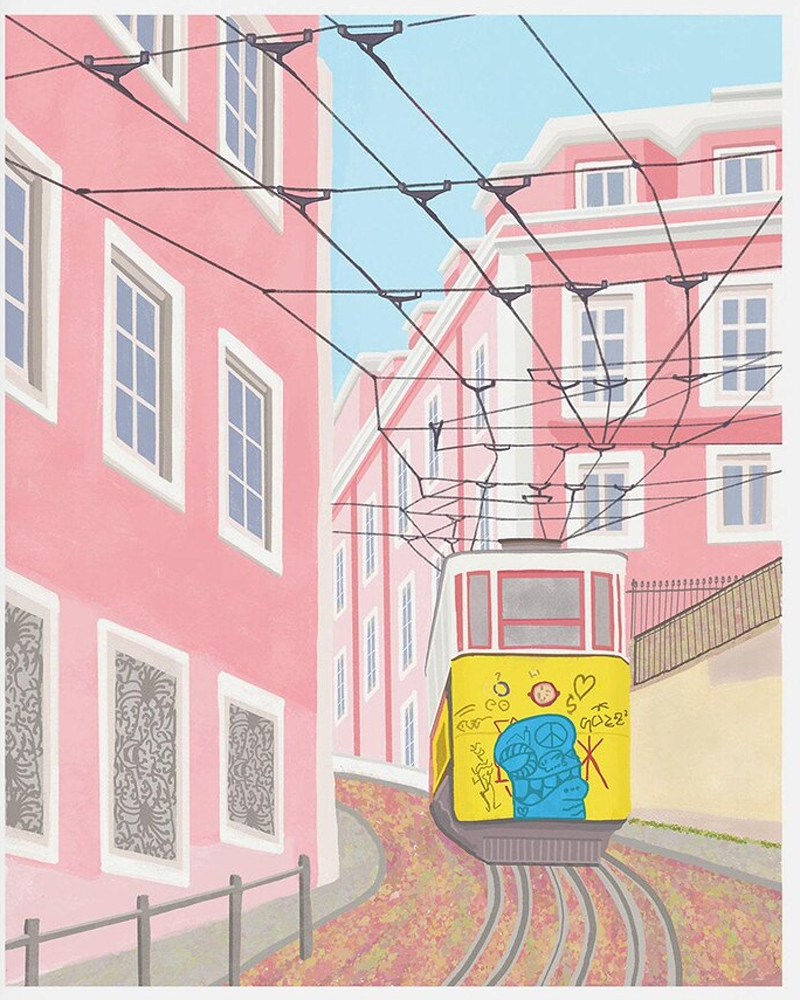
Modern trams run on electricity, which means no tailpipe fumes at street level. Every time a tram glides by, passengers get home without adding soot or black smoke to local air. Diesel buses, on the other hand, still cough out nitrogen oxides and particulates on the same city routes.
Reduced traffic noise
Trams don’t just clean the air. They quiet the city too. Nothing rattles past quite like an old diesel bus. You hear it before you see it, especially on narrow city streets where sound bounces off the buildings. Trams, though, run on rails and are powered by electric motors. This means their movement is smooth and nearly silent, with just a soft hum as they roll by.
Noise isn’t just a minor nuisance. Chronic traffic noise has been linked to sleep problems, stress, and even increased blood pressure. Swap in trams and the main roads quickly change. Research by Transport for London and several European cities shows tram corridors are typically 5–8 decibels quieter than roads dominated by diesel buses.
Lower Operating Costs than Buses
Electric trams save money every step of the way. Compared to petrol or diesel buses, trams need less fuel, and electric motors are less complex so trams don’t spend as much time in the repair shed. While trams need some up-front investment to lay tracks and wires, the real savings stack up over the years.
For example, Nottingham’s tram network has helped the city cut its annual transport spend. Transport planners there found that, over a couple of years, trams cost less to run per kilometre than new buses.
The system in Sheffield shows the same pattern. After some years in operation, local officials tracked lower day-to-day running costs thanks to trams’ reliability and leaner maintenance schedules.
Trams also help keep fares steady for riders, while bus tickets often go up to keep pace with rising fuel. This means more people can afford to use public transport, which leads to fuller vehicles and healthier city budgets.
Boost to Local Business and Properties
Trams don’t just get people from one place to another. They help city centres and neighbourhoods thrive. Shops and cafés see more foot traffic when a tram stop is nearby, since more people can reach their doors without having to drive or hunt for parking. Trams encourage people to hop off, wander, shop, and grab a bite.
Research in Blackpool found that small businesses along tram routes had higher sales even during cooler times of year, simply because more shoppers arrived. The same trend appears in parts of Europe, where towns like Freiburg and Strasbourg have watched high street shops grow after putting in modern trams.
What about house prices? Studies from Britain and the continent are clear: homes within walking distance of a tram stop climb in value faster than similar properties further away. Blackpool’s tram upgrade brought up the average price of houses nearby. The uplift can be strong enough to make a big difference for owners, long-term renters, and the council tax base.
Urban Mobility and Accessibility
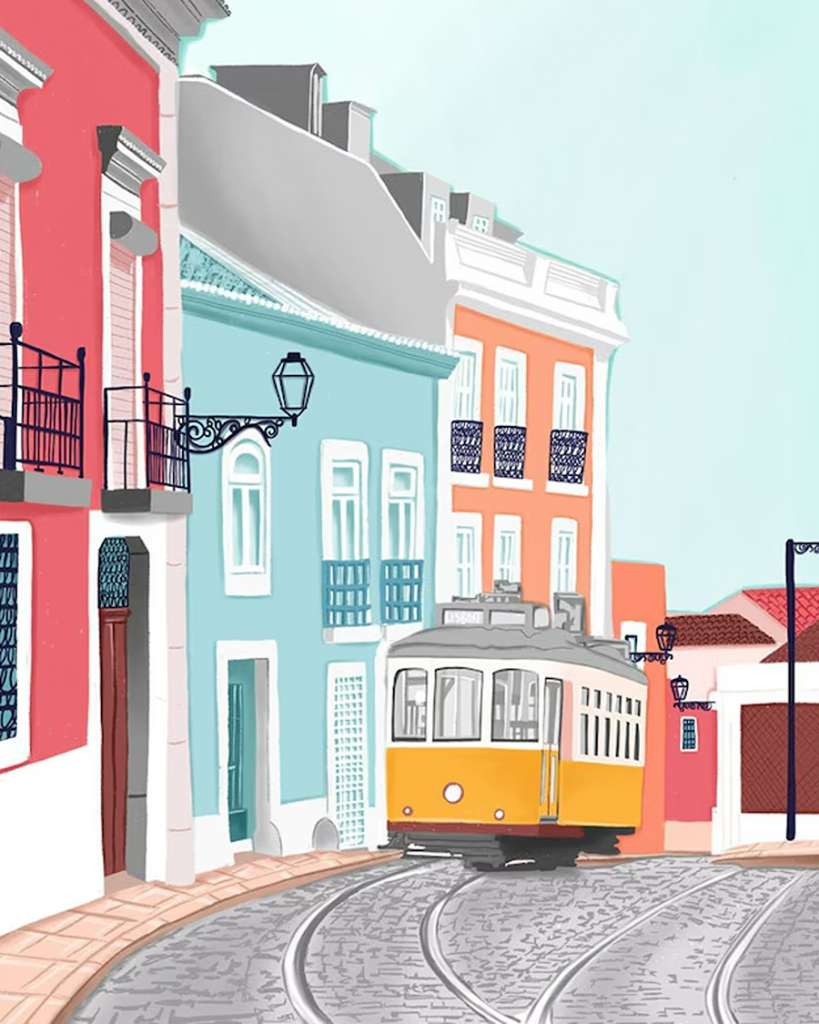
Lisbon, Simply Katy Prints
Made of six lines, Lisbon’s tram route is comprised of bright yellow street cars, which weave through the city faster than buses, and take more people too.
Getting from one part of an English city to another can often feel like a challenge. Packed buses, long walks between train stations, and endless lines of slow-moving traffic make daily commutes a test of patience.
Serving dense corridors like Leeds and Bradford
A new tram system to connect Leeds and Bradford (just 9 miles apart) is in the works, and this is due to begin in 2028. It hopes to:
- Cut the number of short car trips between city centres and their suburbs.
- Offer more stops than the current rail lines, with easy access for local residents.
- Fill in the missing links where buses crawl through endless traffic.
- Lower carbon emissions by getting more commuters out of their cars.
Cities like Manchester show how tram systems can serve dense routes, linking areas that fast trains miss. Imagine being able to hop on a tram in Headingley, Leeds, and step off in central Bradford without once having to squeeze onto a delayed train or wait for another late bus. That level of convenience changes how people move and what jobs, shops, and opportunities they can reach.
What is mystifying is why it costs far more to build trams in England, than elsewhere. The tram extension in Manchester cost £203 million for just under 1 mile of track. Yet in France, transport planners built a 9-mile tram network for £260 million (almost a tenth of the cost). Why?
Blackpool Tramway and Modern Upgrades

Blackpool tram has just launched a major extension, showing the other city planners how good public transport is done.
Blackpool has a proud tram history, but it wasn’t always so sharp. The town spent years running older, slower cars that creaked along the seafront. In 2012, a complete revamp rolled out new Bombardier Flexity 2 trams, wider platforms, and priority signals at crossings.
These sleek, modern trams carry more people at higher speeds, running from Starr Gate to Fleetwood with open, accessible layouts. Upgrades include:
- Spacious, low-floor trams for step-free boarding
- Up-to-date ticketing systems for less queuing and faster travel
- Upgraded track and electrics that boost both speed and reliability
The effect was clear. Passenger numbers jumped right after the changes. While older vehicles topped out at around 3 million annual rides, the revamped system now draws over 5 million passengers a year.
Sheffield Supertram and Its Impact
Sheffield’s Supertram hit city streets in the mid-1990s. It quickly proved that trams are far more than a tourist novelty. Instead, Supertram took cars off the road, cut noise on key routes, and revived tired stretches of the city centre.
How did this change happen? With regular, reliable trams moving past jams and delays. People living and working in the city started to leave their cars at home. Shopping, commuting, and heading out to events became more direct. Sheffield tracked this with numbers:
- Car travel through the city centre fell by up to 20 percent on some key roads after Supertram came in. Daily ridership topped 40,000 passengers by the late 2010s, a record for the network.
San Francisco’s Trolley Cars (inspiration)

With lots of hills, the US city of San Francisco also is known for its trolley cards, pulled by cables embedded in streets. These were invented by an English mining engineer who lived in the US in the late 1800s, born out of tragedy when he witnessed five horses dragged to their deaths when they slipped on wet cobblestones and slid backwards under their heavy load.
San Francisco’s trolleys offer another lesson. Their compact tram cars are nimble enough to twist through narrow, steep city streets and negotiate tight corners. That’s just the kind of flexibility needed in many older English towns—places where road layouts are set in stone.
Advantages for historic or dense cities:
- Trams can work with tight corners and narrow roads
- Minimal need for street widening or loss of historic buildings
- Tourists and locals both use—and love—them


